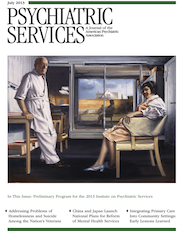In 2010, more than 105,000 people were injured or killed in the United States in firearm-related incidents. Tragic mass shootings have focused public attention on finding ways to protect children and communities from firearm violence. A new report from the Institute of Medicine (IOM) and the National Research Council proposes priorities for a research agenda to improve understanding of the public health aspects of gun-related violence, including its causes, health burden, and possible interventions. According to the committee that wrote the report, significant progress can be achieved in three to five years through a research program that addresses five high-priority areas: the characteristics of gun violence, risk and protective factors, prevention and other interventions, gun safety technology, and the influence of video games and other media.
The report stems from executive orders issued by President Obama in January 2013 that directed federal agencies to improve knowledge of the causes of firearm violence and ways to prevent it. One executive order charged the Centers for Disease Control and Prevention (CDC) with identifying the most pressing research needs in this area. The CDC asked IOM and the National Research Council to recommend a research agenda on the public health aspects of firearm-related violence. The committee determined potential research topics by surveying previous relevant research and soliciting public input. It was not asked to consider the amount and sources of funding required for the research, and it did not specify research methodologies to use.
“The complexity and frequency of gun-related violence combined with its impact on the health and safety of the nation's residents make it a topic of considerable public health importance,” said Alan Leshner, Ph.D., chair of the study committee and chief executive officer of the American Association for the Advancement of Science. “Therefore, when developing its agenda, the committee took a public health approach that focused on gun violence problems associated with significant levels of injuries and fatalities. Although this research agenda is an initial, not all-encompassing set of questions, it could help better define the causes and prevention of firearm violence in order to develop effective policies. . . . Similar approaches to public health problems have produced successes in lowering tobacco use, accidental poisoning, and motor vehicle fatalities.”
Research in the priority area of characteristics of gun violence should focus on characterizing the scope of and motivations for gun acquisition, ownership, and use and how guns are distributed across subpopulations. It also should describe differences in nonfatal and fatal gun use across the country. In the area of risk and protective factors, research should identify factors associated with youths having access to, possessing, and carrying guns and evaluate the potential risks and benefits of having a firearm in the home. Research in this area should also seek to improve understanding of factors that influence the probability of firearm violence in specific high-risk locations.
In the third priority area, studies should investigate various approaches to preventing firearm violence, including interventions to diminish illegal carrying of firearms, to restrict access to legally purchased guns of individuals with a criminal record and those who are violence prone, to educate children about prevention, and to alter physical environments in high-crime areas. Research in the priority area of gun safety technology should identify the effects of different technological approaches to reduce firearm-related injury and death, examine past consumer experiences with accepting safety technologies, and explore gun safety policies in individual states and other countries for applicability to the United States as a whole. The committee identified the influence of video games and other media as a separate priority area, calling for studies to examine the relationship between real-life violence and exposure to media violence.
The 113-page report,
Priorities for a Public Health Research Agenda to Reduce the Threat of Firearm-Related Violence, is available on the National Academies Press Web site at
www.nap.edu/catalog.php?record_id=18319.

